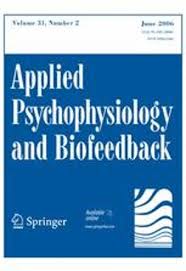Comparing the Effects of Square, 4–7-8, and 6 Breaths per Minute Breathing Conditions on Heart Rate Variability, CO2 Levels, and Mood.
Catégories
Mots-clefs
Catégories
Mots-clefs
Square and 4–7-8 breathing are popularly promoted by psychotherapists but have little empirical support. We hypothesized that breathing at 6 breaths per minute (bpm) would improve HRV, reduce blood pressure, and improve mood more than either square or 4–7-8 breathing. We also hypothesized square and 4–7-8 breathing would increase end-tidal CO2(PETCO2). Eighty four college students (60% female) had HRV measured at baseline and during 1) square breathing, 2) 4–7-8 breathing, 3) 6 bpm with a 4:6 inhale-to-exhale ratio, and 4) 6 bpm with a 5:5 ratio. We used a 3-lead electrocardiogram to measure HRV and a capnometer to measure PETCO2. We measured mood using the Scale of Positive and Negative Experience (SPANE) after each breathing condition. We used a repeated measures mixed effects model to examine the effects of each breathing technique on HRV, blood pressure, mood, and PETCO2 levels. Breathing at 6 bpm increased HRV measures more than square or 4–7-8 breathing with small to medium effects. None of the breathing conditions resulted in meaningful changes in blood pressure or mood. Unexpectedly, breathing at 6 bpm led to mild over-breathing. While various breathing techniques
are used in psychotherapy, their relative efficacy remains unclear. This study found that breathing at 6 bpm is likely more effective at increasing HRV than square or 4–7-8 breathing, albeit with a higher risk of over-breathing. Future studies could examine whether these effects hold over multiple weeks of breathing practice and attend to the effects of different breathing techniques on CO2 levels.
Télécharger la publication complète, Cliquez ici
